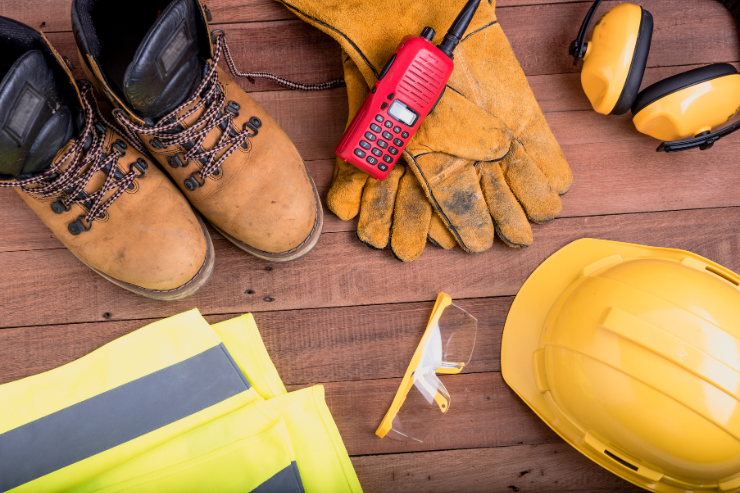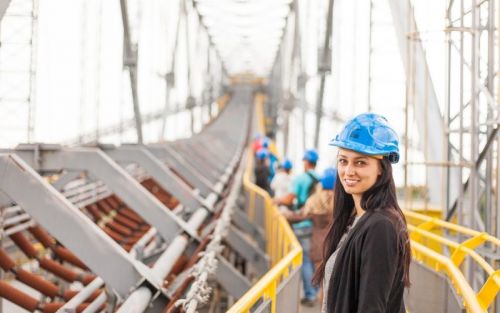
Using personal protective equipment (PPE) in the construction industry is crucial for construction workers’ safety, yet only 60% of them consistently wear PPE.
This issue compromises individual safety and affects project efficiency and regulatory compliance.
Factors contributing to improper PPE usage include;
This article will examine these factors in detail and explore practical solutions to improve PPE compliance and enhance safety within the construction industry.
Comprehensive training on PPE usage is vital for ensuring that construction workers understand how to use their protective equipment properly.
Thorough training programs are necessary to demonstrate PPE’s correct use, maintenance, and importance. This will significantly reduce the risk of workplace injuries and enhance compliance.
Safety-focused businesses are prone to have 21% more profits than those without proper safety programs.
Effective training educates workers on the procedures and instills the importance of safety, leading to a culture of vigilance and care on the job site.
However, many existing training programs fail, often lacking in-depth instruction and practical demonstrations.
Research shows that 75% of employees think their employers can do better safety training.
These deficiencies can result in workers being ill-prepared to use PPE correctly, increasing the likelihood of improper usage and workplace accidents.
Addressing these gaps through comprehensive and practical training initiatives is essential for improving overall construction worker safety and PPE compliance in the construction industry.
Uncomfortable items like ill-fitting helmets, restrictive gloves, and bulky safety goggles often lead to workers removing or improperly wearing PPE.
Survey responders say excessive sweating (100%) and pressure marks on the skin in one or more areas on repeated use (19%) are some of the reasons to take PPE off.
Managers also face challenges in ensuring the use of PPE in hot conditions. A previous J.J. Keller survey indicated that 93% of workers operate in environments where PPE could increase the risk of heat illness.
Research showed that 1 in 3 respondents reported difficulty finding PPE in the right sizes, with 55% needing larger sizes and 41% needing smaller ones.
The issue was most prevalent for head and upper body protection, with 53% experiencing trouble in these areas.
Additionally, 35% struggled to find PPE that properly fits female employees. Ensuring a proper fit is crucial, as workers need to wear PPE comfortably throughout their workday.
Time pressures in the construction industry often lead to PPE being overlooked, as tight schedules and productivity demands can result in workers prioritizing speed over safety.
The conflict between meeting project deadlines and adhering to safety protocols creates an environment where the use of PPE is seen as a hindrance rather than a necessity.
This issue is further illustrated by a real-world example where a major construction project experienced multiple injuries because workers, pressed for time, neglected to wear appropriate PPE.
These injuries caused immediate harm, project delays, and increased costs, underscoring the long-term consequences of compromising safety for productivity.
Accessibility of PPE on large construction sites poses significant challenges, often leading to compliance issues.
50% of employers say that they are experiencing supply chain delays that sometimes lead to PPE shortages. Besides, the equipment can sometimes be lost or stolen during work.
This can result in workers foregoing PPE, increasing construction worker safety risks. Practical solutions such as centralized PPE stations, mobile PPE units, digital inventory systems, and automated dispensing machines can be implemented to improve accessibility.
These innovations ensure that PPE is readily available, enhancing compliance and overall safety.
Certain types of PPE, such as full-face respirators, safety goggles, and hearing protection, can obstruct communication and visibility, impacting safety and efficiency on construction sites.
These impairments can lead to misunderstandings, reduced situational awareness, and increased accident risks. Common problems with using PPE kits include fogging of goggles or face shields (88%), suffocation (83%), breathlessness (61%), fatigue (75%), and headaches from prolonged use (28%).
Innovations in PPE design, like transparent face shields, integrated communication systems in helmets, and noise-canceling ear protection that allows verbal communication, address these issues.
Active supervision is crucial in ensuring PPE compliance and construction worker safety on sites. Supervisors play a key role in enforcing PPE policies by setting clear expectations, inspecting the equipment regularly, and addressing non-compliance promptly.
Techniques such as daily safety briefings, spot checks, and providing immediate feedback can effectively reinforce PPE rules.
However, some workers believe that the employees ignore the construction worker’s safety and don’t want them to use PPE because it decreases productivity and work progress.
From a profitability perspective, consistent enforcement of PPE policies leads to better compliance, fewer health compensation needs, and a safer work environment.
Seasoned workers often harbor misconceptions about risk, believing their experience reduces the need for PPE. This overconfidence can lead to bypassing safety protocols, significantly increasing the risk of accidents and injuries.
Experienced workers might assume that their familiarity with tasks protects them, ignoring that accidents can happen to anyone regardless of skill level.
Educational approaches are essential to changing these attitudes. Strategies include targeted training sessions emphasizing the importance of PPE for construction worker safety, regardless of their experience, and sharing statistics and case studies of incidents involving seasoned workers.
Successful programs, such as peer-led construction safety workshops and interactive safety demonstrations, have effectively re-educated workers, fostering a renewed commitment to PPE usage and overall workplace safety.
Proper use of PPE is essential for construction worker safety, yet several issues significantly hinder compliance.
Inadequate training, discomfort, time constraints, accessibility challenges, impaired communication, lax supervision, and misconceptions about risk all contribute to the problem.
Addressing these factors is crucial for enhancing safety on job sites.
Comprehensive training programs, personalized PPE, practical accessibility solutions, and consistent enforcement of PPE policies are necessary for improvement.
MobiClocks®️ plays a pivotal role by providing real-time monitoring, ensuring accountability, and simplifying compliance management through its advanced features like True Face Recognition and seamless integration with construction site safety protocols.
By leveraging MobiClocks®️‘ innovative solutions, construction companies can foster a construction worker safety environment and improve overall compliance with safety regulations.
Request a FREE DEMO today to see how MobiClocks®️ can improve PPE compliance and overall workforce management.

There are a lot of ways to deal with no call, no show employees. The policies you enforce will depend on the type of manager you are.

Naturally, productivity and work ethics are positively and strongly correlated. There are many ways to set up a work environment where ethics are valued, and one of the most effective ways has proven to be guidance and empowerment. If you are ready to tak

Having an employee handbook is essential to the efficient operations of your business. In general, it contains all the procedures and policies that go on in your firm. It’s vital to have one, especially in construction companies, where logistics plays a h